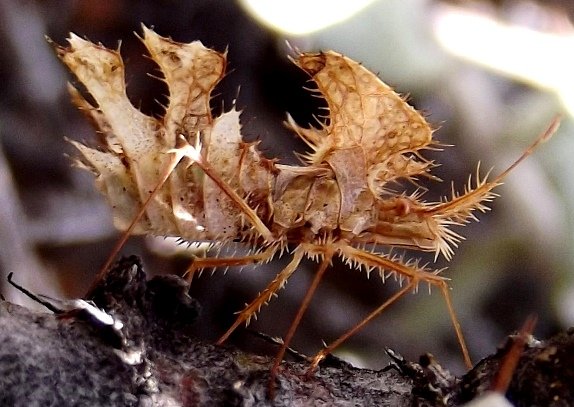Crossdresser

No, those are not dry leaves. Theyre protrusions from the chest section of an insect. The spines serve as protection as well as camouflage, functional in the world of South African spiny plants. Spiny bugs shunning the limelight would welcome the abundance of spiny plants if they could think that far.
This body colour probably works better for its owner as camouflage in the dry seasons, although many plants of arid regions retain some dried-out parts even while green and growing. And who knows whether the colour may be swapped chameleon style, seasonally or geographically?
Belonging to the order Hemiptera, the family Coreidae and the genus Pephricus, the species may be paradoxus. There are, however, some similar looking other species in the genus as well.
This spiny citizen lives in the scrub vegetation of the Little Karoo. Some of these bugs suck juice from plant stems, causing them to wilt. Stinkbugs have glands from which they can eject a malodorous substance some distance when threatened, or when the fancy takes them (Holm, 2008; Wikipedia; iSpot).

